When Returning from Open Sea: Red Buoy Response Guide
Navigating the open sea can be an exciting yet challenging endeavor for boaters. One of the critical aspects of maritime navigation is understanding the meaning of the various buoys and markers encountered along the way. Red buoys, for instance, play a significant role in helping boaters determine their position and direction while returning from open water. Knowing how to respond when you see a red buoy ensures safe and efficient navigation.
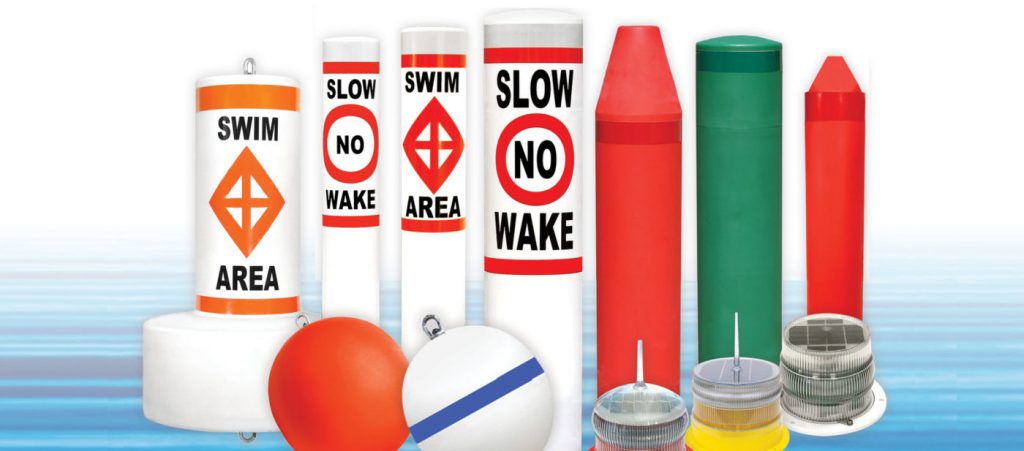
Red buoys, also called starboard hand buoys, are essential navigational tools that mark the right side of a channel when returning from the open sea. In addition to providing directional guidance, red buoys indicate safe water areas and help boaters avoid potential hazards. The general rule to remember when encountering a red buoy is to keep it on your boat's right side when you are returning to port, heading upstream, or entering a channel from seaward.
Key Takeaways
- Red buoys mark the right side of a channel when returning from the open sea, aiding in safe navigation.
- Understanding the significance of buoy colors and numerical indicators assists boaters in avoiding hazards.
- Additional navigation aids and local knowledge can enhance safety while navigating open water and entering channels.
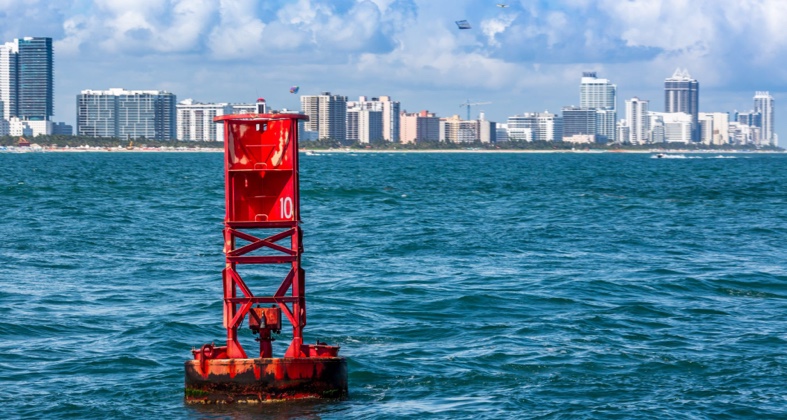
Understanding Red Buoys
Red buoys are a critical component of nautical navigation, as they help boaters identify the boundaries of navigable waterways. Alongside green buoys, these red lateral markers denote the edges of channels and serve as an essential guide for those out on the water.
Typically, boaters should be aware of the well-known phrase "Red, Right, Returning" as it highlights the crucial rule for navigating around red buoys. When entering a channel from the open sea or proceeding upstream, vessels must keep the red buoys on their right (starboard) side. By doing so, mariners can ensure a safe passage through the designated channel.
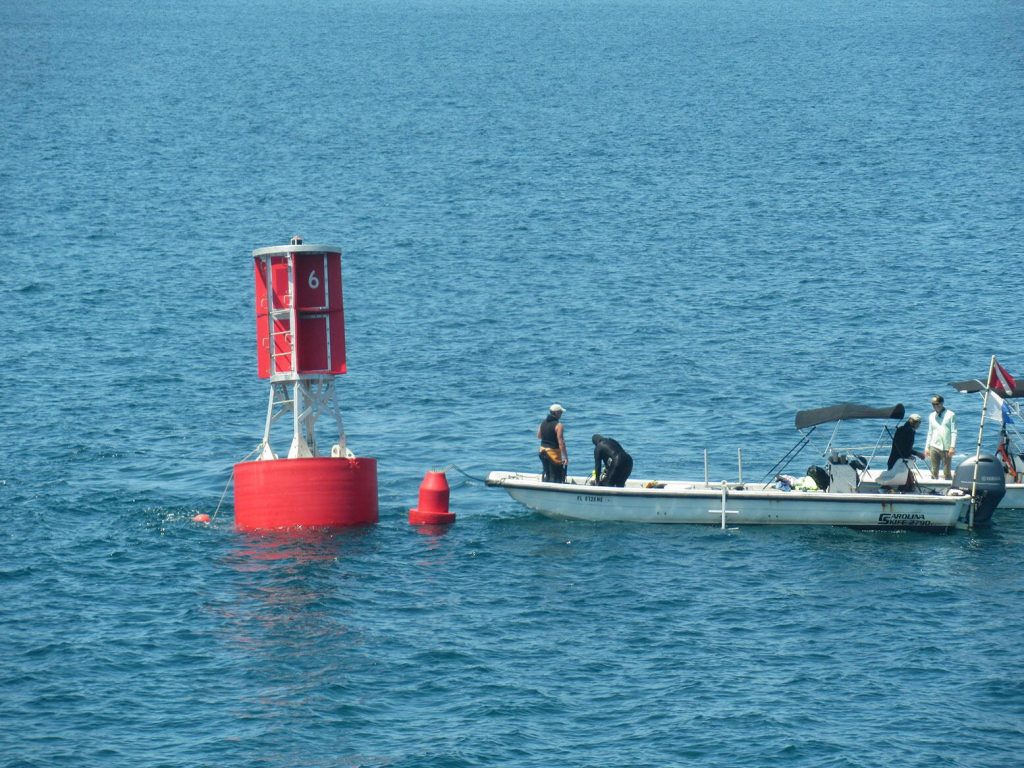
In some cases, red buoys will display even numbers, which should be increasing as boats move inland or proceed upstream in a channel. It is essential to carefully observe these numbers and maintain an appropriate distance from the buoy to avoid unwanted collisions.
Another point of consideration is junction buoys, which have horizontal bands of both red and green colors. These markers signify the intersection of two channels, where the primary or preferred route is indicated by the color highest on the buoy.
By understanding the meaning and significance of red buoys along with their color schemes and symbols, boaters can confidently and safely navigate through waterways. These markers serve as essential tools for maintaining proper courses, ensuring maritime safety, and fostering a clearer awareness of the nautical environment.
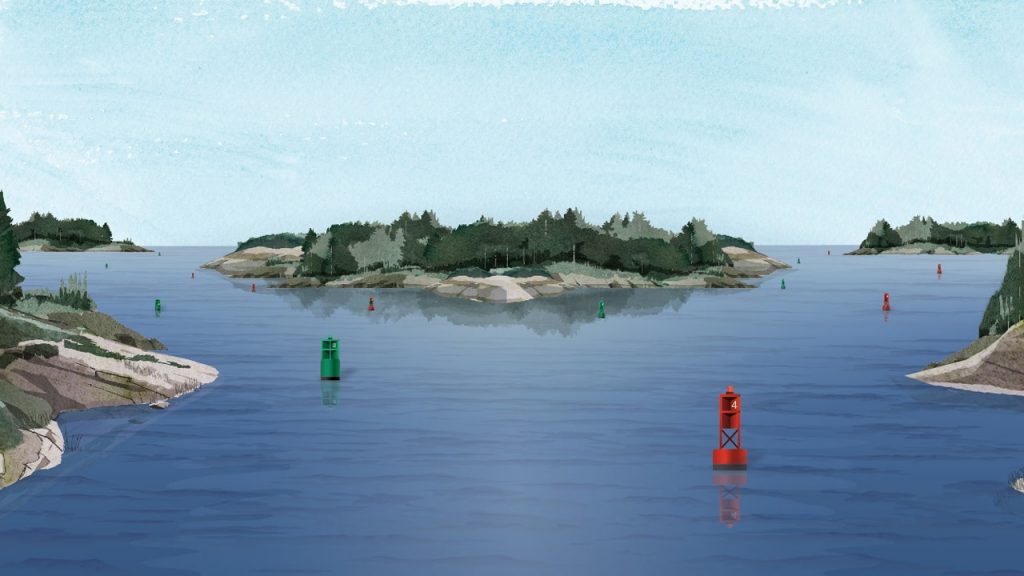
Significance of Right Side
Navigating through channels and waterways requires knowledge of buoyage systems and their significance. When returning from the open sea and encountering a red buoy, it is essential to understand its meaning and how to respond appropriately. This is where the principle "Red, Right, Return" becomes important. It is a fundamental rule in boating that helps mariners safely maneuver through channels while avoiding navigational hazards.
The right side, also known as the starboard side, of a vessel plays a crucial role when adhering to the "Red, Right, Return" rule. This principle means that when a boater is moving toward their home port or heading upstream, they should keep the red markers, such as buoys and lights, on their starboard (right) side. These aids to navigation have even numbers and are typically cone-shaped nun buoys or similarly-styled red lights.
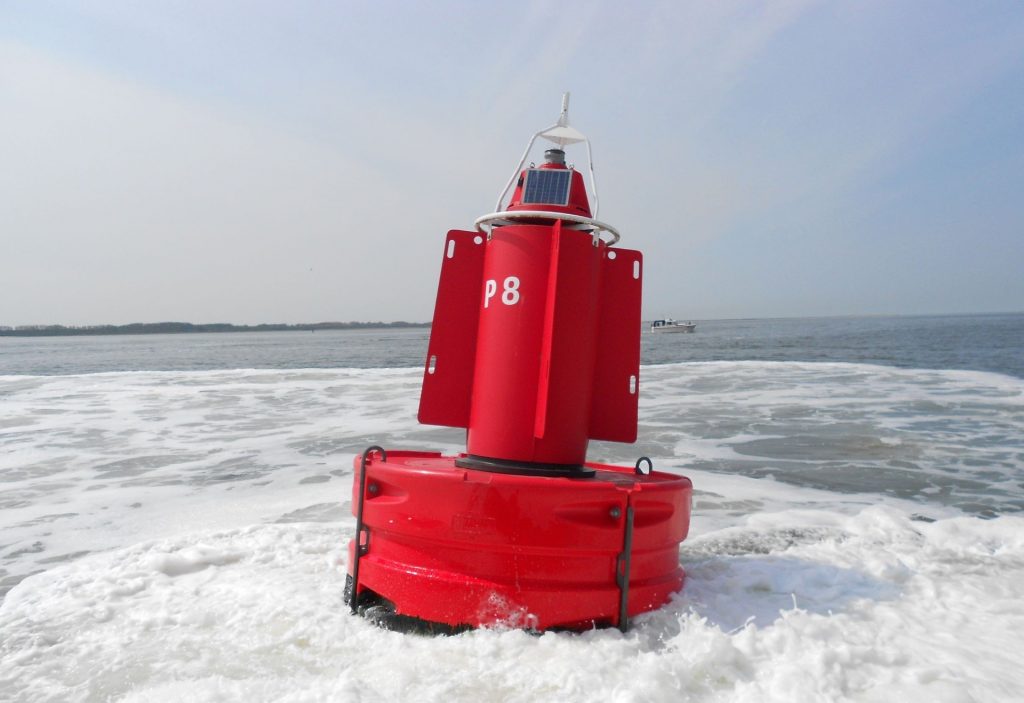
This rule ensures that boaters remain within the safe confines of the channel. Red buoys indicate the edges of the waterway and notify mariners of potentially dangerous areas or obstructions. Keeping the red markers on the right side while returning from the open sea prevents running aground or collisions with underwater hazards.
When a channel splits, red and green markers or lights are used to guide the vessel safely through the water. Remembering the "Red, Right, Return" rule in these situations can help avoid confusion and maintain the proper course.
In conclusion, it is crucial for mariners to understand the significance of the right side and adhere to the "Red, Right, Return" rule when returning from open sea, encountering a red buoy. Mastering this basic navigation skill ensures safe and efficient travel on the water while avoiding navigational hazards.
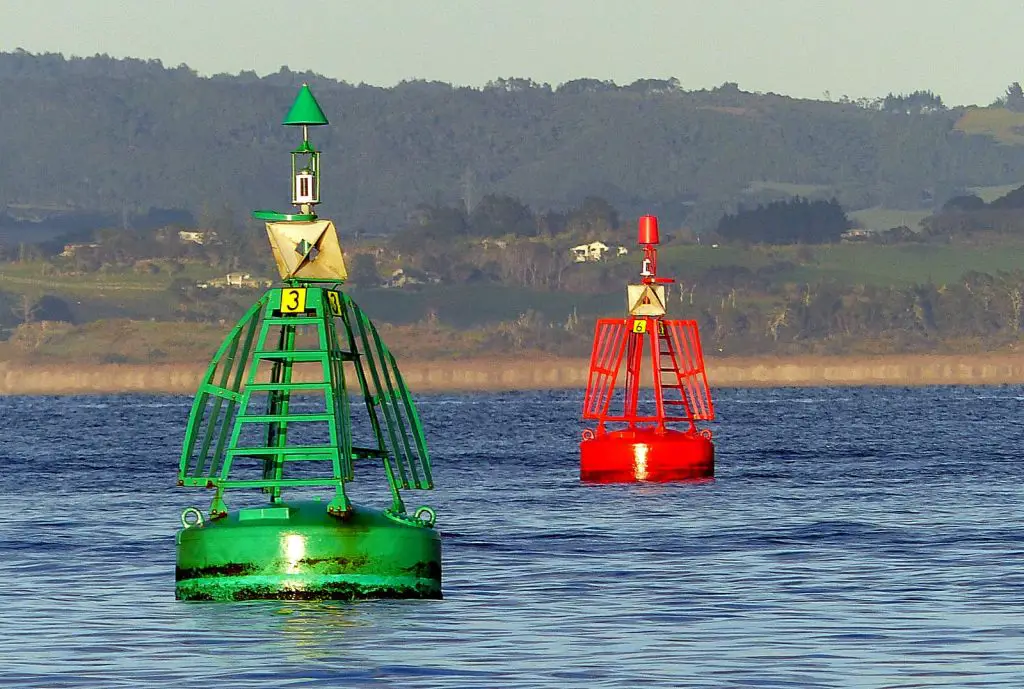
Navigation in Open Sea
Navigating in the open sea requires a combination of experience, skill, and knowledge of various navigation aids to ensure safe passage. One of the most common aids used for safe navigation is the use of buoys and channel markers. These devices help vessels identify and follow navigable waterways and avoid obstacles or hazards.
When returning to port from the open sea, it is crucial for boaters to pay attention to the buoys and channel markers they encounter. In particular, encountering a red buoy is a signal that the boat is approaching a channel or navigable waterway. Red buoys, also known as starboard hand buoys, are placed along the edge of a channel and should be kept on the boat's starboard (right) side when returning from seaward or heading upstream. These markers typically have even numbers and may also display a red light at night to help with visibility.
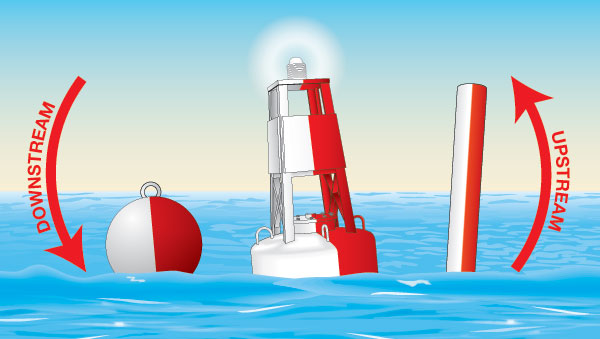
As boaters proceed through the channel, they must also be mindful of green lateral markers on their port (left) side. The space between the red and green buoys indicates the safe passage for vessels, separating the navigable channel from potential hazards or obstacles. This system of red and green markings, also known as the "red right returning" rule, is vital for maintaining safe navigation, especially in confined waterways or areas with variable conditions.
In addition to the color-coded buoys, mariners should also utilize other navigation aids such as charts, GPS systems, and compasses to establish their position and identify any hazards or obstacles in their path. Combining these tools with the use of lateral markers will assist in ensuring safe navigation for all vessels in the open sea.
While navigating in the open sea, it is essential for boaters to remain vigilant and proactive in their approach to safety. By closely monitoring their surroundings and using the available navigation aids, they can minimize the risk of accidents or grounding while returning to port. Proper knowledge of buoys and channel markers, such as red buoys, is a fundamental skill for safe and efficient navigation.
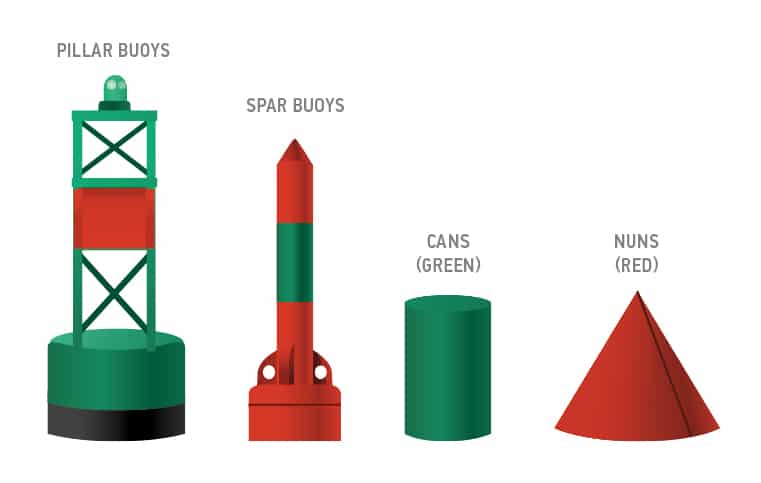
Role of Markers and Buoys
Markers and buoys play a crucial role in guiding vessels through channels and waterways, acting as navigational aids for sailors. These colorful markers are strategically placed along the watercourse, helping to regulate marine traffic and provide essential information, allowing boats to navigate safely through designated channels.
One of the most common types of markers seen is the lateral marker. Lateral markers come in two primary colors - red and green, indicating the edges of safe water passage. When returning to port from the open sea, the red buoy is identified as a starboard hand buoy and should be kept to the right side of the vessel. Green buoys, on the other hand, have odd numbers and mark the left edge of the channel, known as the port side.
The saying "red right return" is an easy way to remember the placement of these markers while heading back to your home port from seaward. This means that the red marker will be on your right side when you are returning to port, while the green marker will be on your left.
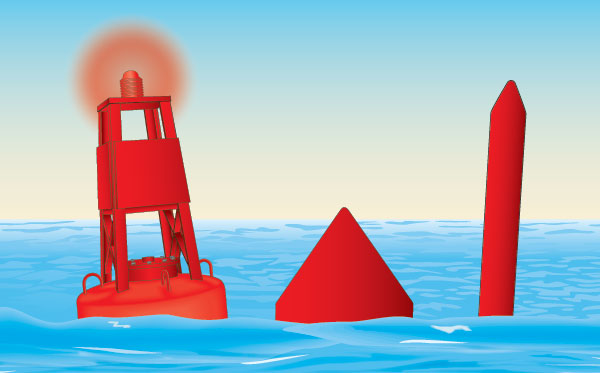
Apart from lateral markers, there are other marker buoys, such as cardinal marks and channel markers, which provide additional navigational aid depending on the specific waterway's conditions. For instance, cardinal marks, with their distinct yellow and black color bands, signal the presence of hazards, such as rocks, wrecks, or shoals.
In conclusion, navigational aids such as markers, buoys, lateral markers, starboard hand buoy, and channel markers are essential tools that help sailors identify safe waterways and avoid potential hazards. Having a solid understanding of these aids is critical for safe and efficient navigation in a maritime environment.

Entering a Channel from Sea
When returning to a home port from seaward, navigating through a designated channel is crucial for safe passage. Upon approaching the channel, boaters may encounter red buoys, which serve as lateral markers indicating the boundary on the starboard (right) side of the channel. These markers work in conjunction with green buoys, which define the port (left) side, to delineate a channel's edges on the water.
To enter the channel properly, boaters should first reduce their speed, allowing for better control and maneuverability. At this point, the navigational principle "red right returning" becomes essential. While heading from the open sea towards a harbor, port, or bay, the red buoy must always be positioned on the vessel's right side, ensuring safe passage within the channel.
Staying within the designated channel is imperative, particularly when encountering red and green markers simultaneously. These markers help guide a boat through the channel; hence, maintaining a steady course between them prevents accidents or possible grounding in shallow waters.
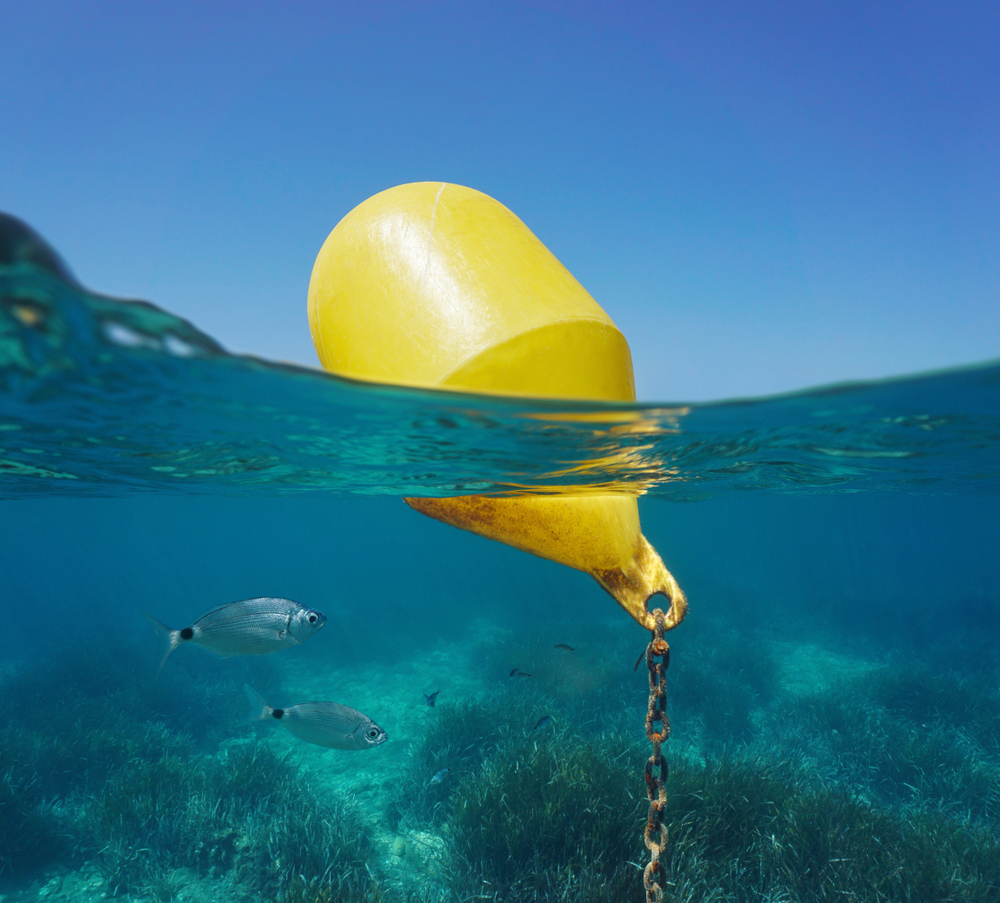
In some instances, a junction between two channels may be marked by navigation aids featuring horizontal bands of red and green. In such situations, boaters must carefully observe the channel markers and follow the new channel accordingly, keeping the red markers on their right when returning to port.
By adhering to these guidelines and understanding the significance of red and green buoys, entering a channel from seaward can be a smooth and trouble-free experience. This knowledge goes a long way in ensuring safe navigation and a successful return to a vessel's home port.
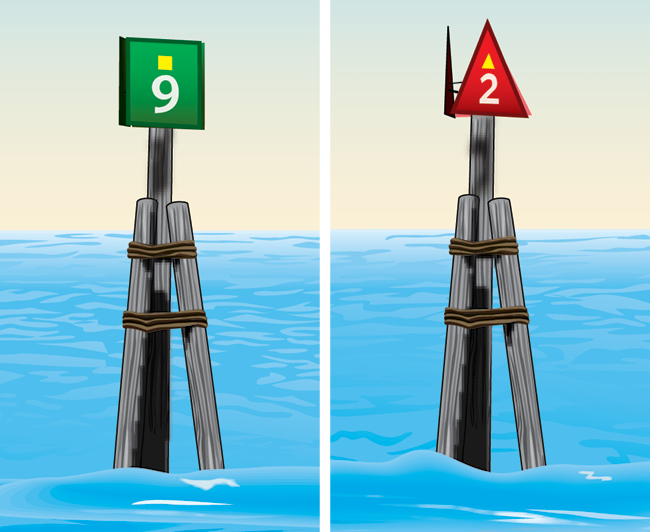
Decoding the Significance of Colors
Navigating the waters requires boaters to understand the meanings behind the various colored buoys and lights that serve as essential navigational tools. In this section, we will discuss the significance of red and green buoys, as well as red and green lights, which aid boaters in determining their course when returning from open sea.
Red buoys and red lights typically mark the right side of a channel when returning from the open sea. Boaters should keep the red channel markers on the right side of their vessel as they return to shore; this rule is easily remembered with the phrase red right returning. Red buoys often feature even numbers, and these numbers usually increase as the vessel proceeds inland source.
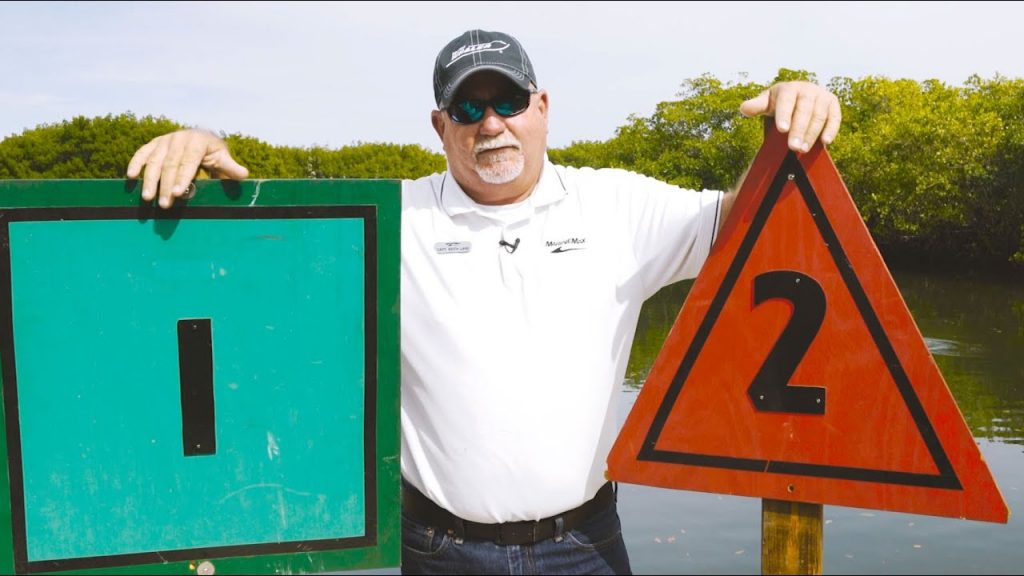
On the other hand, green buoys and green lights usually mark the left side of a channel when returning from open sea or heading upstream. To stay on course, boaters should keep these markers on the port (left) side of their vessels source. Green buoys often have odd numbers, which typically increase as one navigates further upstream.
In summary, it is crucial for boaters to correctly interpret the meanings of red and green buoys as well as red and green lights. Doing so will help ensure their safe passage when returning from open sea or navigating through channels. By keeping red markers on the right side of the vessel and green markers on the left side, boaters can confidently maintain their course and reach their desired destination.
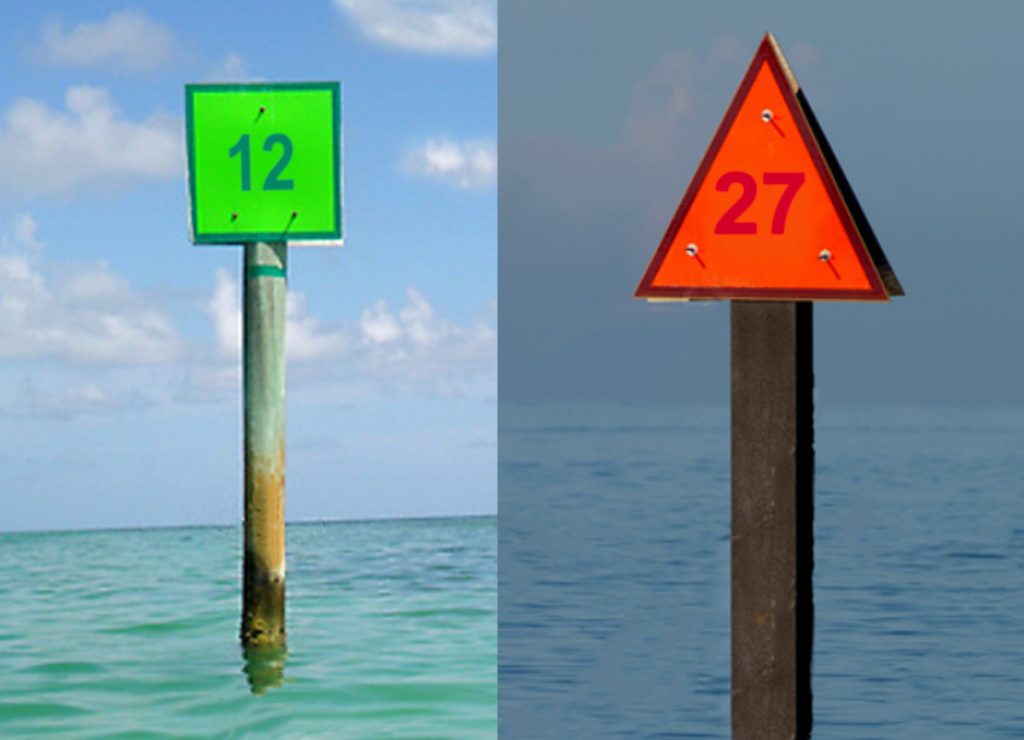
Numerical Indicators and their Meaning
When returning from the open sea and encountering a red buoy, it is essential to understand the meaning of the numerical indicators associated with these navigation aids. The US Aids to Navigation System (USATONS) utilizes colors, lights, and numbers on their buoys and markers to provide essential information for boaters navigating waterways.
Even Numbers on Red Buoys
Red buoys typically have even numbers and represent the starboard (right) side of a channel when entering from open sea or heading upstream. The presence of a red buoy with an even number signifies that boaters should keep the buoy on their starboard side for safe navigation. As you progress further upstream or return from the open sea, the numbers on the red buoys will usually increase consecutively.
Odd Numbers on Green Buoys
Opposite to the red buoys mentioned above, green buoys typically have odd numbers, indicating the port (left) side of a channel while entering from open sea or going upstream. Similar to the red buoys, the numbers on green buoys also increase consecutively as you move further upstream or return from open water.
Understanding the meaning behind numerical indicators of buoys and ensuring to keep them on their respective sides (red on starboard, green on port) helps ensure a safe and efficient navigation through water channels. Boaters must maintain a confident, knowledgeable, and clear understanding of these navigation aids to maneuver their vessels in the right direction and avoid potential hazards or accidents on the waterways.
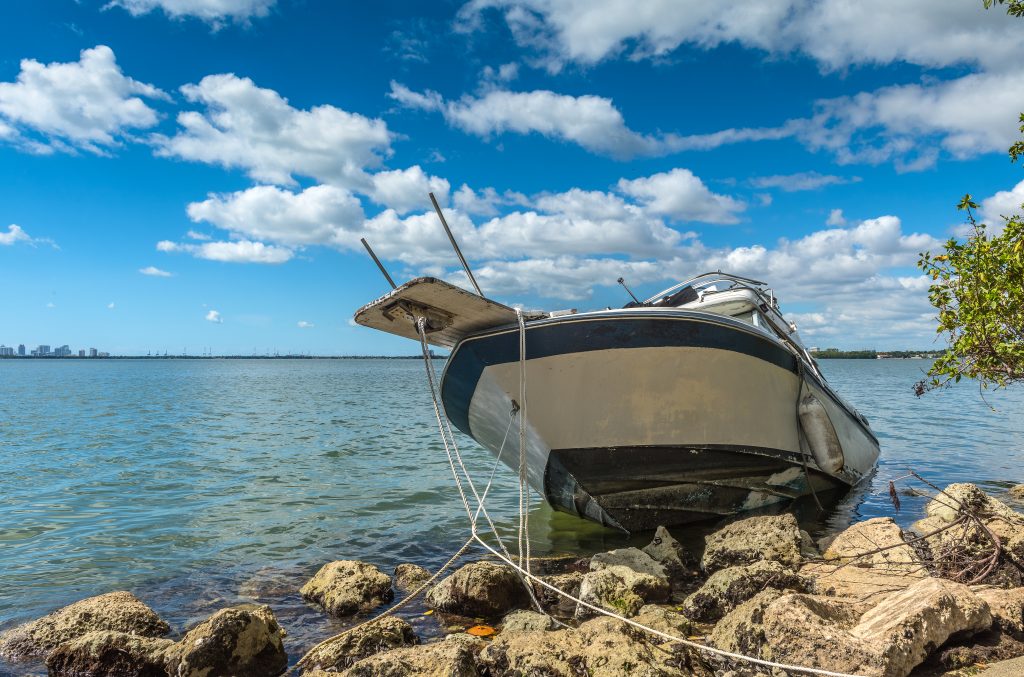
Hazards and Potential Dangers
When returning from the open sea and encountering a red buoy, it is essential to respond appropriately to ensure safe navigation and avoid hazards and potential dangers. Red buoys, also known as lateral markers, mark the edges of a channel and guide boats to the designated course source. However, venturing outside these channels can expose vessels to various risks.
Shallow waters are one such hazard. Straying from the marked channel may lead to boats running aground because of insufficient water depth. This can result in severe damage to the hull or underwater components, and, in extreme cases, even compromise the vessel's structural integrity.
Another potential danger is underwater rocks and shoals. These hazards are not always visible from the surface, making them especially hazardous to vessels that venture too close. Colliding with an underwater rock or shoal may cause significant damage to the boat, leading to costly repairs or even total loss in extreme cases.
To stay safe and avoid these hazards, it is crucial to exercise caution and adhere to established navigation rules. When returning to port and observing a red buoy, the boat should maintain the buoy on its right or starboard side while proceeding inland source. This practice, known as "Red, Right, Returning," helps ensure that vessels stay within the safe navigation channel.
In summary, when responding to red buoys while returning from open sea, boaters should be aware of potential hazards such as shallow waters, rocks, and shoals, and exercise caution by adhering to established navigation rules. By navigating with confidence and knowledge, boaters can ensure their safety and avoid the dangers lurking beneath the water's surface.

Safe Water Areas and Zones
When returning from the open sea and encountering a red buoy, it is essential to know how to navigate safely through water channels. Red buoys, also known as starboard hand buoys, along with green buoys (port hand buoys), mark the edges of the channels. Understanding how to respond to these buoys will help boaters maintain safe water areas and zones.
Safe water areas are the designated passages between the red and green buoys for boats on the water. As a boater, you should keep the green buoys on your port (left) side and the red buoys on your starboard (right) side while entering a channel from the open sea or heading upstream. Following these guidelines will ensure that you are in a safe water zone, avoiding potential hazards such as shallow waters, rocks, or other obstacles.
In addition to lateral markers like red and green buoys, other types of markers serve to provide information about waterway navigation. For example, safe water markers indicate that there is navigable water all around the marker; they are usually white with red vertical stripes. In contrast, information and regulatory markers convey specific details or regulations within a water area to ensure safe navigation for all boaters.
Maintaining a safe distance from these markers and buoys is crucial for preventing accidents and ensuring a smooth journey. Boaters should be cautious not to get too close to markers or other watercraft, as this may lead to collisions or damage to vessels. Additionally, practicing proper etiquette on the water includes giving way to other boats, adhering to speed limits, and remaining aware of one's surroundings.
In summary, when navigating through water channels, it is important to understand and correctly respond to various markers, such as red buoys. By doing so, boaters can ensure they maintain safe water areas and zones, creating an enjoyable and secure boating experience.
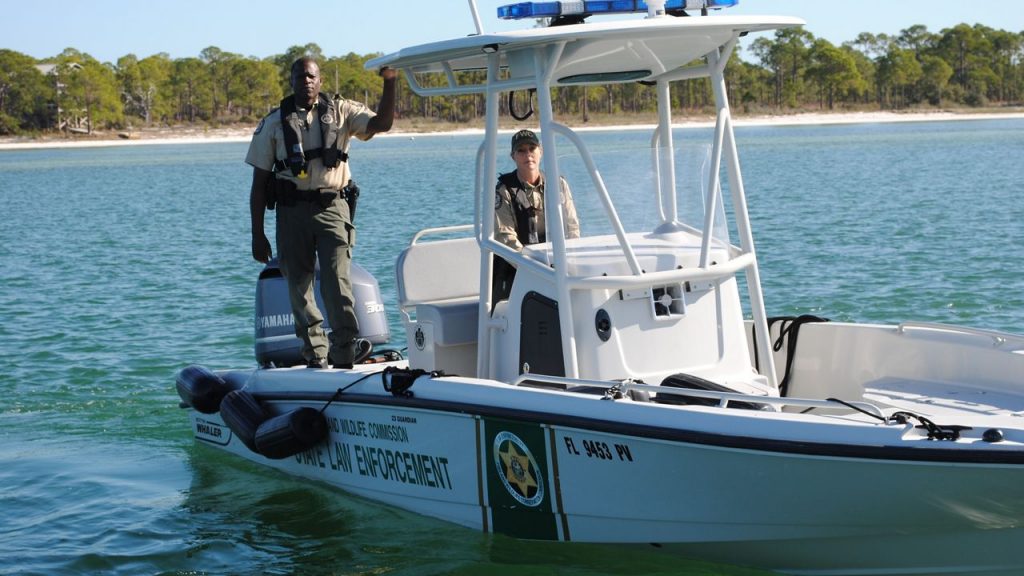
Legal and Local Consequences
When returning from the open sea and encountering a red buoy, it is crucial to understand and follow the proper navigation protocols. Not adhering to these guidelines can lead to potential legal and local consequences.
Local authorities, such as the U.S. Coast Guard, are responsible for enforcing navigational rules and regulations. These rules are in place to ensure the safety of all boaters in the water and to avoid collisions, groundings, and other accidents. They are also designed to protect the environment by preventing damage to delicate marine habitats.
Penalties for violating navigational rules can vary depending on the severity of the infraction and the jurisdiction. In some cases, boaters may receive a warning, while in others, they may face fines or even suspension of their boating license. In more serious instances, such as when a violation results in property damage, personal injury, or loss of life, boaters might face legal consequences, including charges of negligence or reckless operation.
The legal consequences of not properly responding to a red buoy may involve civil lawsuits if the negligent boater's actions cause harm to another person or their property. Such lawsuits can lead to compensation claims for damages, medical expenses, and lost wages, among other expenses. It is essential for boaters to maintain up-to-date knowledge of navigational rules, as ignorance of these regulations is not a valid defense in court.
In summary, following proper navigational protocols when encountering a red buoy is not only crucial for the safety of the boater and others in the water but also to avoid potential legal and local consequences. Compliance with these rules helps to ensure smooth sailing and a positive experience for all parties involved on the water.
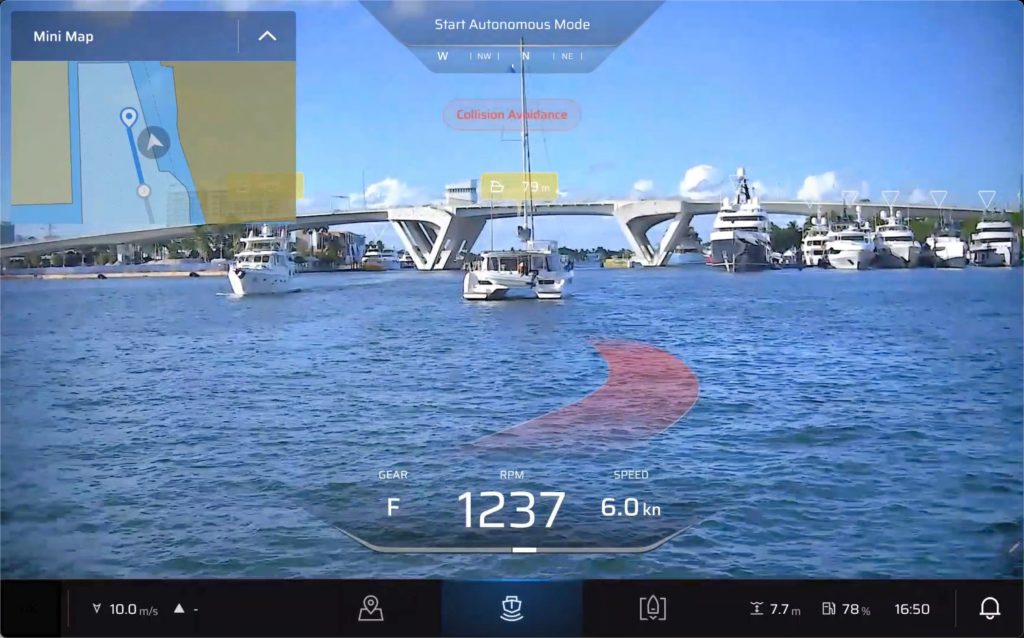
Additional Navigation Aids
In addition to red buoys, there are other navigation aids that can guide boaters at sea, like yellow buoys and certain navigational aids.
Yellow buoys are specialized markers, usually indicating a controlled or restricted area, such as a caution zone, a water skiing area, or a mooring zone. To ensure safety, it is crucial to follow any instructions on these buoys or nearby signage. If no specific instructions are given, proceed with caution and maintain a safe distance from the buoy. Yellow buoys, just like red ones, are meant to help maintain order and safety in the water.
Navigational aids comprise various markers, buoys, and other devices designed to help boaters navigate waterways safely. Examples include channel markers, range markers, and even lighthouses. Each of these aids serves a specific purpose, such as marking the edges of channels or indicating the presence of hazards like shallow water or rocks. Familiarizing oneself with common navigational aids is essential for all responsible boaters.
For a confident, knowledgeable, and safe boating experience, it is important to understand and respect all navigational aids placed in the marine environment. These devices, including red buoys, yellow buoys, and other navigational aids, provide essential guidance to help boaters avoid danger and ensure a smooth and enjoyable journey on the water.
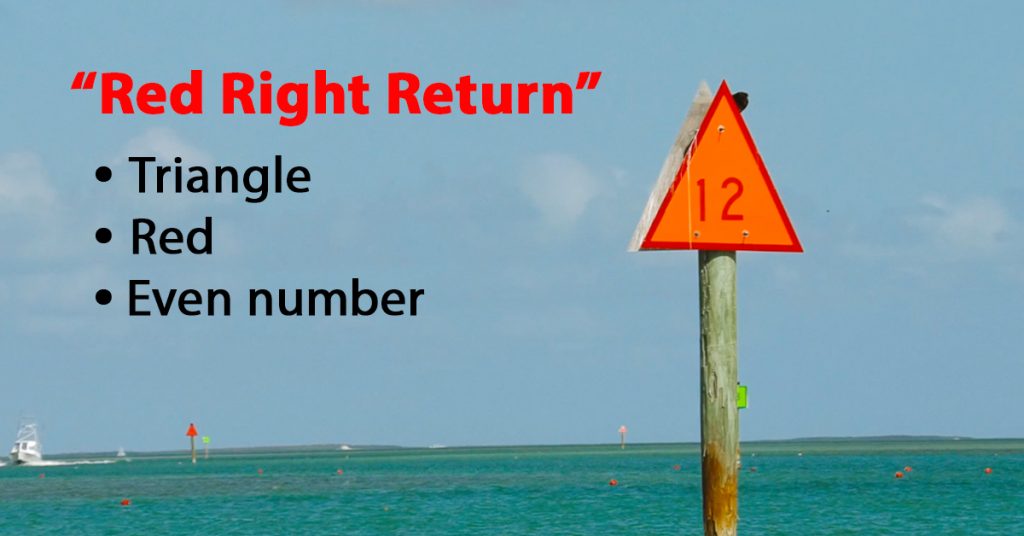
Conclusion
When returning from the open sea and encountering a red buoy, it is essential for boaters to respond appropriately in order to navigate safely. A red buoy is a lateral marker, also known as a starboard hand buoy, which marks the edge of a channel. These buoys, along with green lateral markers, establish the designated channel of passage for boats on the water.
Upon sighting a red buoy, the first step is to reduce the speed of the vessel, as a slow-moving boat is more easily maneuverable and provides more time to assess the situation and take appropriate action. It is crucial to maintain a safe distance from the buoy to avoid straying out of the channel and potentially running aground or encountering other hazards.
Boaters should also be mindful of the red-right-returning rule, which dictates that the red markers, with red lights and even numbers, should be on the boat's starboard (right) side when moving toward the port from open sea or heading upstream. This ensures that the vessel remains within the safe confines of the channel.
In summary, the appropriate response to sighting a red buoy when returning from open sea involves reducing speed, maintaining a safe distance from the marker, and following the red-right-returning rule to navigate safely through the designated channel. By adhering to these guidelines, boaters can successfully return to port while avoiding potential hazards and ensuring a safe and efficient journey.
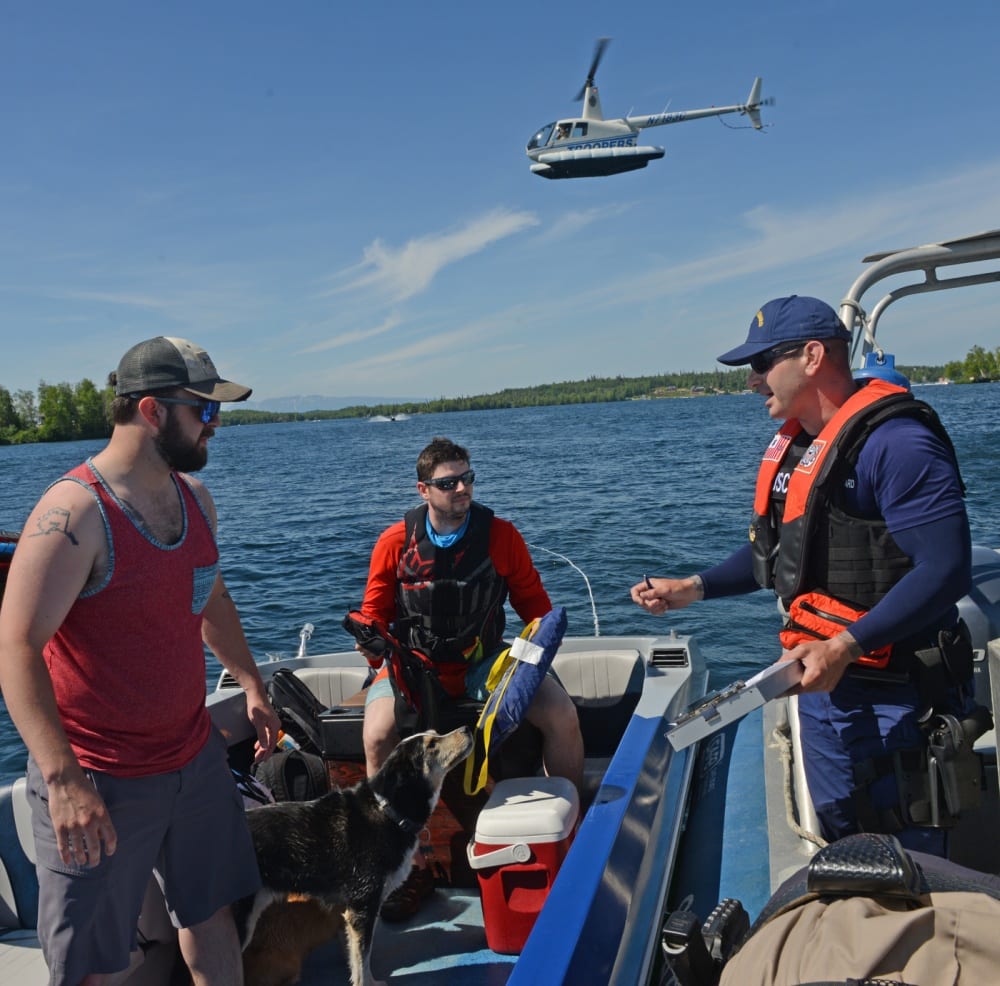
Frequently Asked Questions
How should a red buoy be approached when returning from open sea?
When approaching a red buoy from open sea, it's essential to maintain a safe distance and reduce your vessel's speed. A slow-moving vessel is easier to control, allowing you to assess the situation better and take appropriate action 1.
What is the correct way to pass a red navigational buoy?
The correct way to pass a red navigational buoy when returning from open sea is to keep the buoy on the starboard (right) side of your vessel 2. This ensures that you are navigating the channel safely as you head towards shore.
Which side should you pass a red buoy on when heading towards shore?
When you are heading towards the shore and encounter a red buoy, you should pass it on your starboard (right) side 3. An easy phrase to remember is "red right returning," meaning red buoys should be on your right side when returning to shore.
What does a red buoy with a number six indicate?
A red buoy with a number six indicates the specific location within the channel, as lateral buoy numbers increase consecutively when returning from open sea or heading upstream 4. In this case, the red buoy numbered six marks the edge of the channel on your starboard side.
What is the significance of a red lighted buoy at sea?
A red lighted buoy signifies that the marked navigational hazard lies to the left of the buoy when viewed from seaward, ensuring that the left edge of the channel is visible even in darkness or low visibility conditions 5. This assists mariners in navigating safely by night.
How do red and green navigational buoys help in avoiding obstacles?
Red and green navigational buoys are used to mark the edges of a channel, providing a safe passage for vessels 6. By keeping red buoys on your starboard side and green buoys on your port side (left), you can safely navigate the channel and avoid potential hazards or obstacles.
Footnotes
Charlie is Editor-in-Chief of Sea Magazine